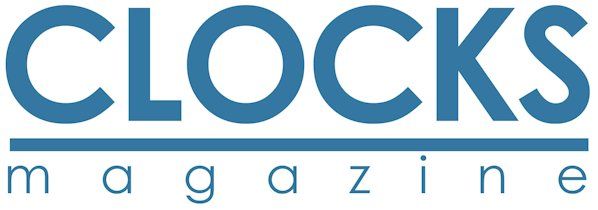Barnard of Newark
I very much enjoyed Brian Loomes’ article in the February issue on William Barnard of Newark. Below are brief details of four Barnard clocks not included in his list.
1. Unnumbered, 30-hour single-handed movement, 11in square brass dial with plain matted centre, large 110o sector date aperture and signed ‘W Barnard, Newark’ on oval inset disc below XII.
2. No 586, eight-day movement, 12in square brass dial with plain matted centre, large 180o mouth date aperture, inset seconds dial with ‘586’ engraved above centre and signed ‘William Barnard newark’ on chapter ring.
3. No 612 eight-day movement, dial and movement assigned as No 586 except no quarter hour band on chapter ring.
4. No 988 30-hour two-handed movement, 11in square brass dial with plain matted centre, 180o mouth aperture, false ringed winding holes and signed ‘W Barnard Newark 988’ on circular inset disc below XII.
Some of the genealogy of the family of Daniel Tantum, William Barnard’s master in the 17th and 18th centuries, has been reported1 and an extract relating to the Tantum clocksmakers was included in an article published in this magazine.2 Some relevant facts about Daniel and his father Jonathan are given below.
Daniel Tantum, the son of Jonathan and Mary, was born in 1690 and was therefore 34 (not 24) when he took on William Barnard as an apprentice. He was brought up as a Quaker in Loscoe, then part of the parish of Heanor in Derbyshire, and he was most probably taught clockmaking by an older cousin, Francis, who signed his clocks ‘ … Loscoe’ and was born in 1674. Daniel signed his clocks ‘ … Derby’ and ‘ … Nottingham’ and possibly ‘ … Loscoe’.
In 1715 Daniel and his wife Martha had a daughter Mary and Martha died in 1717. Daniel was stated to be of Derby in 1722 and in 1723 when he and a Mary Greaves of Nottingham declared their intention to marry at the Nottingham Quaker Monthly Meeting. Jonathan, in his will,3 signed in 1732, refers to Daniel as a clockmaker of Nottingham and in the 1741 Derby Poll Book Daniel is referred to as a clockmaker in one list and as ‘of Nottingham’ in a second list. So Daniel seems to have moved from Loscoe to Dery some time before 1722 then to Nottingham in 1723 or 1724 when he took on William Barnard as an apprentice. In 1741 he was still living in Nottingham but had property in Derby.
Craven4 states that Jonathan was a clockmaker but that no clocks are known by him. Jonathan, in his will, refers to himself as a yeoman of Loscoe, some 12 miles from Derby. At this time he was probably over 80 years old as he had a son, John, who was baptised in 1673. It is clear from the will that Jonathan owned property in Irongate in Derby which was let and sublet.
Jonathan left practically all of his extensive property in trust to Daniel’s son, another Daniel. He left only the trivial sum of five shillings to his son Daniel who was not made an executor so he would have little influence over the distribution of his father’s estate. It seems unlikely that Jonathan had a business in Derby, clockmaking or otherwise, which his son Daniel took over when he died.
I hesitate to criticise such an eminent authority on clocks and the genealogy of their makers as Brian Loomes. However I would like to make a plea that he and other writers provide references to their sources. This would help to correct many of the errors which abound in the horological literature and reduce the perpetuation of such errors.
1. The Tantums of Derby, Loscoe and Heanor, J J Webster, Derby Family History Society, December 2000, Issue 95.
2. ‘The Tantum Clockmakers’, J J and R J Webster, Clocks, Volume 24 No 8, August 2001.
3. Jonathan Tantum’s Will, Probate 1733, Lichfield Record Office.
4. Clockmakers & Watchmakers of Derbyshire, Roy G Hughes and Maxwell Craven, Mayfield Books, 1998.
Jeff Webster, UK
|

